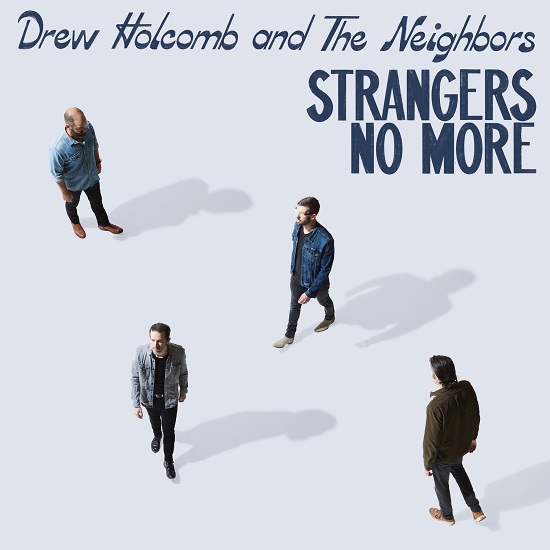
It’s just over three weeks since the World Health Organisation declared that COVID is no longer an emergency and a couple of years since it peaked, but the impact of the virus is still being felt, particularly in the fields of music and leisure. This Drew Holcomb and the Neighbors album was written on either side of the pandemic and pulled together in a way that couldn’t have happened during the emergency. Drew and his band spent eight days in a studio in Asheville NC, playing the songs live and searching for the perfect take. It’s a process with an element of risk but it works if you have good songs and good players; ‘Strangers No More’ has both of those in abundance. Lyrically, the album’s largely positive, emphasising the way forward rather than looking back, and reflecting Drew’s new outlook and more relaxed attitude to performance.
Drew Holcomb’s blessed with a versatile voice, equally at home on the tub-thumpers like ‘Dance with Everybody’ which hints at Springsteen, The Waterboys and Paul Simon’s African experiments, and the more reflective triple time ‘Gratitude’ with its soaring chorus and vocal that resembles Ian Matthews in the mid/late seventies. In fact, the seventies influence looms large throughout the album, sometimes where you least expect it. The album also showcases Drew’s vocal range and the band’s superb use of dynamics, shifting effortlessly from gentle acoustic arrangements to full-on widescreen E Street band arrangements; there’s plenty of variety, all held together by tight arrangements and the quality of Drew Holcomb’s voice.
And what about some of those other seventies references? ‘That’s On You, That’s On Me’ is a wake-up call song that opens with a nod to ‘Stuck in the Middle With You’ and moves on through rock guitar riffs with a country rock feel as the song progresses. ‘Possibility’ and ‘On a Roll’ both have an E Street Band feel while the latter also has a soundscape that seems to reference The Blue Nile. The big surprise is ‘Strange Feeling’, which opens with a ‘Darlington County’ style riff before, morphing into an early seventies Steely Dan sound complete with a guitar solo that could be the legendary Jeff Baxter.
Drew Holcomb and the neighbours succeed in pulling together a variety of styles and influences to create an album feels at the same time familiar and wholly original where everything is there to serve the song. This album will make you think, make you smile and make you want to dance like no-one’s watching – you can’t ask for more than that.
‘Strangers No More’ is released in the UK on Friday June 9th on Magnolia Music.
Here’s the video for ‘Dance with Everybody’:
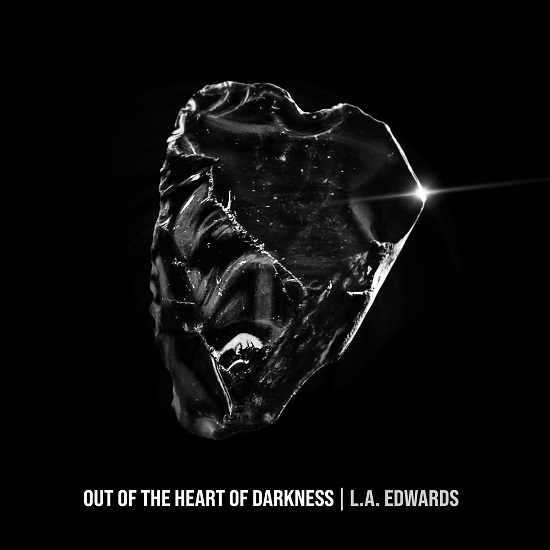
Imagine driving along the freeway in the early eighties. The sun’s shining, the roof’s down and the radio’s tuned to the local FM station. You could be listening to any song from the L.A. (Luke Andrew) Edwards album ‘Out of the Heart of Darkness’. Unfortunately the press pack didn’t come with a time machine, so it was a Skoda on the A12 but at least the sun co-operated. The album’s packed with nine classic FM style rock songs influenced by the bands of the late seventies and the early eighties mixed with Luke Edwards’ acoustic folk roots to create a widescreen sound that’s difficult to resist.
The album starts with a haunting spoken intro from a child in some sort of distress before launching into ‘Little Boy Blue’ which opens with the album’s trademark jangling guitars overlaid with a synth line. The chiming guitars, harking back to Tom Petty, The Byrds and even the Mersey Sound are a constant throughout the album and L.A.’s slightly nasal intonation emphasises the Tom Petty connection (his first solo album was produced by former Heartbreaker Ron Blair) and there are hints of other influences as well. Creedence Clearwater Revival and the Laurel Canyon groups; Neil Young, Eagles and so on, but there are a few surprises as well.
Most of the musical stylings are standard rock band arrangements (drums, bass, guitars and keys) but there are a few surprises as well. ‘Already Gone’ (not an Eagles cover) begins with a swirling Wurlitzer prelude before the sticks click and the band blasts into the song. There’s a good use of dynamics throughout the album as songs build up gradually and there are plenty of breakdowns to vary the tempo and power. ‘Stick to You’ is another interesting blend of styles, combining L.A.’s earlier folk roots with rock instrumentation and some tribal floor toms to create something that edges into Waterboys territory.
There’s plenty of novelty in the combinations of styles across the album, but there are a few of the old tricks as well including the squalling feedback intro on ‘Now You Know’ and the twin lead guitars opening ‘Time to Go’. There’s even the unapologetic drug references of ‘Hi Rite Now’; it’s got all of the ingredients for a classic rock album.
‘Out of the Heart of Darkness’ is released in the UK on Friday June 2nd and the band will be touring the UK and Europe in early July.
Here’s the video for ‘Already Gone’:
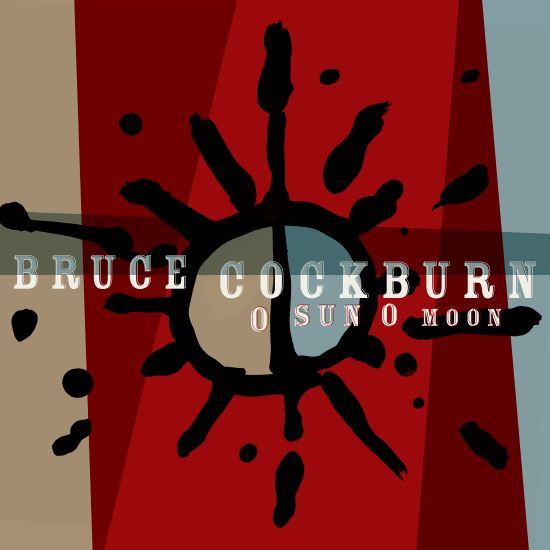
I started to listen to this album on the day that Gordon Lightfoot died, so I’m hoping that there isn’t some kind of omen in that. Bruce Cockburn occupies a similar space to Gordon Lightfoot as a legendary Canadian singer-songwriter in the folk idiom. Bruce is approaching his 78th birthday but still has the impulse to keep writing, recording and performing. ‘O Sun O Moon’ is proof that the quality of his work hasn’t diminished. The twelve tracks on the album are all built around acoustic guitars, but manage to show tremendous musical and lyrical variety. Here are a couple of examples.
‘King of the Bolero’ is the story of an itinerant blues picker “pulling visceral sounds from a no-name guitar” who’s based loosely on a player who was on the local circuit during Bruce’s high school years. It opens with finger-picked guitar and accordion in a shuffling lounge jazz style, adds some trumpet, mandolin and dulcimer along the way before the chorus cuts in with a New Orleans horn section. It’s all a bit surreal and dreamlike. ‘O Sun by Day, O Moon by Night’ is actually based on a vivid dream that Bruce had about his journey to Heaven and has spoken verses over a jazzy background and full-on New Orleans funeral horns accentuating the chorus. Mortality’s a bit of theme towards the end of the album; the closing song ‘When You Arrive’ is about reaching the end of life, while the message of ‘When the Spirit Walks’ is that when the end comes, it doesn’t matter who you were, you’re now just another thread in the fabric of history. The ethereal harmonies and insistent refrain of ‘Colin Went Down to the Water’ tell the story of a friend who died while Bruce was in Maui on vacation last year.
Don’t get the wrong idea; the album isn’t all about death. The album’s opener, ‘On A Roll’ takes a lively look at the march of time and the fact that we can still keep creating if we’re still on a roll. Bruce’s humanity shines through on in ‘Us All’ with a guitar, strings and glockenspiel arrangement and a vocal that hints at Paul Buchanan of The Blue Nile and the album’s second song, ‘Orders’ moves into unusually political territory with references to people that we’re all expected to love, including ‘The pastor preaching shades of hate, the self-inflating head of state’; it’s powerful stuff. Then there’s the ecological warning in the apocalyptic ‘To Keep the World We Know’, co-written with Susan Aglukark who sings harmonies on the song; it’s a clear message about worldwide climate change that we can’t afford to ignore.
‘O Sun O Moon’ is the work of an accomplished writer and performer in his senior years who still has plenty of fire in his belly. The playing is superb throughout and Bruce’s lyrics are perfect examples of concise brevity, where less is more. There’s a perfect example in ‘When You Arrive’ where the scene is set by the couplet: “Breakfast was Mahler and coffee, dinner’s Lightning Hopkins and rye”; there’s so much meaning packed into those ten words. This is an album you need to hear.
If you want to catch him live in the UK Bruce is touring in August with dates at Oxford O2 Academy (24th), Shepherd’s Bush Empire (25th) and Greenbelt Festival (26th). I might even see you at one of those.
‘O Sun O Moon’ is out in the UK on Friday May 12th on True North Records (TND811/TND811V).
Here’s the video for the album’s opener, ‘On A Roll’:
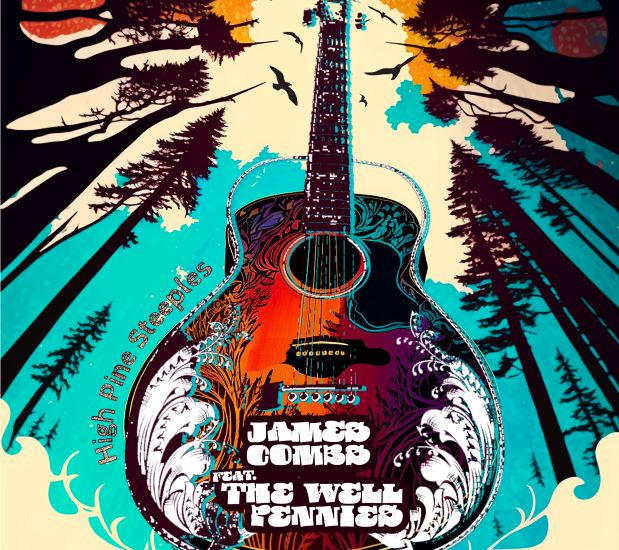
‘High Pine Steeples’ is a love song with a difference. The object of James Combs’ love is California’s redwood groves which and the relationship dates back to the time when he first moved to California. On this song, James is joined by The Well Pennies, Bryan and Sarah Vanderpool, long-time friends from the California scene.
The song portrays the redwood groves as natural places of worship, not just through the lyrical content, but also the way it’s arranged and produced. The arrangement is spare with minimal percussion and lovely harmonies and the production bulks out the sparsity by using a lot of reverb to create a lo-fi and dense texture with instruments and vocals bleeding into each other that evokes both the natural beauty of the trees and the grandeur and claustrophobia of the giant trees; it’s almost a tone poem in triple time. It’s definitely worth investing three minutes of your time on this.
‘High Pine Steeples’ is out now to download and stream.
Here’s the official video for the song:
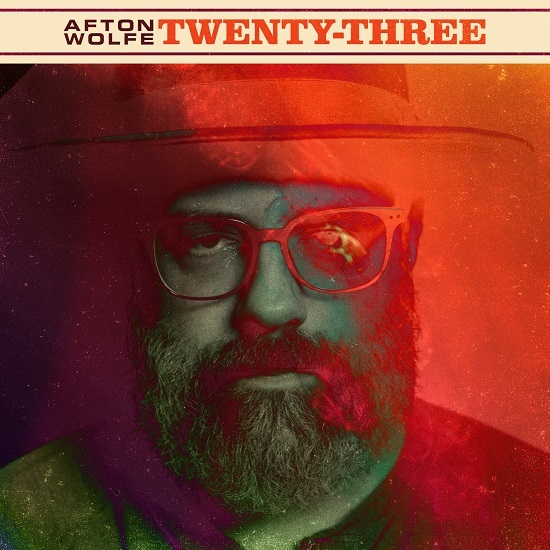
EP or mini album? My money would be on extended EP, but the way music’s distributed and consumed these days, it’s a moot point. Anyhow, Afton Wolfe has pulled together five songs, four of which have been released previously in a digital format and one new piece, ‘Cry’, which was written in response to a close friend’s personal tragedy.
Afton Wolfe is one of those rare artists that sound equally at home in three musical styles with similar roots; blues, soul and country and ‘Twenty-Three’ has references to all of these styles across its five tracks. And you couldn’t truly represent without having a triple-time song; ‘The Moon Is Going Down’ is a slow waltz with a very sparse arrangement and some lovely sax fills underpinning a gravelly vocal. The piano part of ‘Truck Drivin’ Man’ hints at The Doors with a densely-packed arrangement and a counterpoint lead vocal late in the song, while ‘So Purple’ is driven along by a deep bass guitar creating a Southern groove as Afton tells a story of incompatibility using imagery from mixing coloured lights or pigments – red and blue are almost at opposite ends of the spectrum (cold and warm), but they combine to create purple, and who wouldn’t want to be purple? ‘Late Nite Radio’ has a slow country feel with several tempo changes (up and down) to represent the progress of the journey and the busy finale, going out on a lonesome saxophone.
‘Cry’, which is the only entirely new song featured here, is a tour de force. The song is in the classic Stax/Atlantic Southern soul style (you can imagine Otis Redding or Bill Withers wrapping their vocal cords around this one). It’s a powerful slow soul ballad punctuated by Stax-style brass that allows Afton to demonstrate a powerful raw vocal delivery that conveys a sense a deeply felt sense of loss. It’s classic old soul.
The five songs on ‘Twenty-Three’ (I’m not getting into the mystical stuff around the title) are a great demonstration of the breadth of Afton Wolfe’s songwriting and vocal talents. You should give it a listen, and while you’re at it, check out his debut from two years ago, ‘Kings for Sale’. While you’re here, have a look at the video for the incredibly evocative ‘Late Nite Radio’:
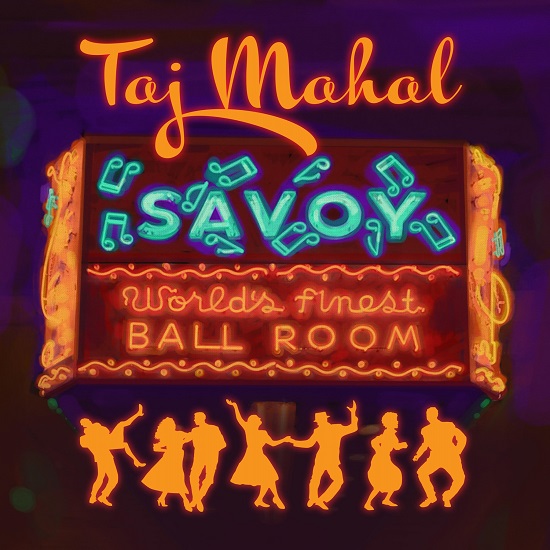
It’s not often I get a chance to review an album by a bona fide musical legend. However you look at it, Taj Mahal definitely fits that bill. He’s been around for ever, he’s influenced whole generations of blues players, collaborated with a host of well-respected players (Ry Cooder to name but one) and followed his own vision for over sixty years. During this time he’s also picked up four Grammy awards. Over the years, he’s pulled in various influences from a huge range of musical styles to spice up his own work, but never quite on this scale.
‘Savoy’ is a project that’s been simmering for almost twenty years between Taj and long-time collaborator and producer John Simon until they finally booked studio time for the project in 2022. ‘Savoy’ is Taj’s tribute to the music that his parents listened to in the swing era of the thirties and forties when they met at The Savoy Ballroom in Harlem. Taj sets the scene in the spoken intro to ‘Stompin’ at The Savoy’ leading in to a hefty fourteen interpretations of swing standards. The arrangements are more in a lounge jazz rather than a barnstorming big band style with all the players turning in relaxed, easy and underplayed performances. Even the solos (and there are a few of those, it is a jazz album after all) are beautifully laconic.
‘Savoy’ is a labour of love for Taj Mahal evoking his earliest memories of music that filled his childhood and started his odyssey through blues and its many associated styles. It’s pure nostalgia, and why not? Anyone who navigates the music business successfully for over sixty years is entitled to look over their shoulder now and again, particularly when it’s done with such subtlety and sophistication. In the best tradition of reinterpretations of classics, Taj Mahal puts his own stamp on the covers. ‘Summertime’ is switched up from ballad tempo to a swinging shuffle, while the album’s closing song, ‘One for My Baby (and One More for the Road)’ stretches out the smoky three AM vibe to a languorous eight minutes. And ‘Baby It’s Cold Outside’ is exactly as you would expect with a guest appearance from Maria Muldaur.
All of the elements of thirties swing are baked in to ‘Savoy’; there are classic horn arrangements recreating the big band sound on a smaller, more mellow, scale; solos from across the instrumental range, including flute and harmonica and even a bit of scat singing from Taj. If you want an affectionate tribute to thirties jazz played by superb musicians, then look no further.
‘Savoy’ is out now on Stony Plain Records (SPCD1470/SPLP1470).
Here’s a clip of ‘Summertime’:


